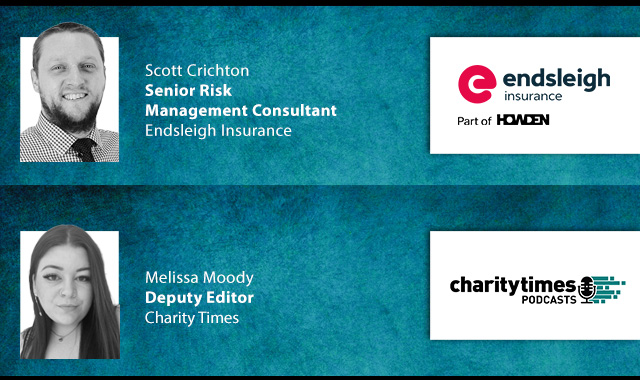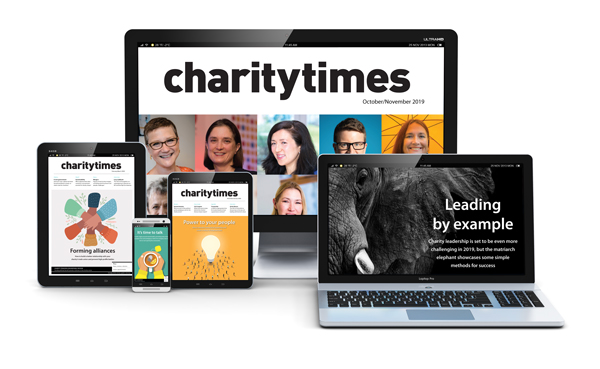As AI chatbots become the go-to source for answers, traditional search habits are shifting fast. For charities, this digital evolution raises urgent questions about visibility, trust, and how to stay relevant in an age where users might ask a bot before visiting a website.
________________________________________________________________________
Charities have a totally unique position in the public psyche; there’s a reason we spend so much time focusing on being trusted, it’s because we have to be.
Who simplified information during Covid? Who designed specific guidance to deal with the mental health challenges of a lockdown? Who do people call when they are at their absolute lowest? Who provides the quality health information people need when faced with a life-changing? Who takes people’s lived experience to government and makes the change happen?
Every one of those questions can be answered by one word; charities. Information, ways to get involved, and more, are often found through Google. But that is changing. Nowadays when people turn to their phones and the internet to ask those questions, they may instead ask AI. If that is the case, then charities need to be right there with them, and then go further.
Be a space for information
Until recently, when someone had a question or wanted to get involved with a charity, they’d be used to navigating to webpages. Traditionally, it’s basic information pages, which often drive lots of an organisation’s traffic. But in the year of 2025, this is changing to AI.
Although it may not be perfect, the ‘AI summary’ seen on Google is perhaps giving a perfectly ‘fine’ answer without someone clicking through to the organisation’s website. That's not to diminish the risks, and as the Patient Information Forum recently outlined we should be working with Google on addressing these concerns. It's more to say that given this technology is present we just need to be ready to consider what happens when it is present.
So what can charities do with this? The first thing charities need to do with their digital spaces is host the answers to those questions. You might ask what the point is, but this is where AI gets its answers. It trawls through websites looking for information it can repackage and show without the user clicking on the website, so we need to give it the high quality information charities produce. Despite some potential ways to avoid AI doing this, if this is the future of search, charities can't avoid it, they must adapt. Charities will need to adapt how they measure success on page performances on and optimise these pages for AI, as well as humans.
Then go further
If people aren’t coming for information on charities’ websites anymore, then you need to give them a reason to stay or actively seek you out. In 2025, it’s about giving more than an answer. Be it more information beyond what AI finds, or a route to how to get involved in your cause.
Websites need to evolve into digital spaces which people actively want to experience.
What does it look like?
This is about more than a simple engagement tool, it’s about finding something AI can’t provide, or something it can, but presented better.
For example, a symptom checker can be done by AI in a chat environment, but the simplicity of a quiz-like set up might be a nicer user experience, so AI might link to it instead. That’s one level, the next stage is finding something you can offer that AI can’t.
Every institution has its strengths. Lean on these, understand what the value you can provide is. Your ‘digital space’ should put this value, and supporting it, at its core. That way, people seek out that hub of information, that tool or even that feeling, rather than just the answer to the question. This is standard practice for website design now, and putting the audience first is always a good idea.
There is a huge shift happening in how people access information, and charities need to adapt with that to continue doing what they do best.
Fundamentally, websites need to become digital spaces which hold information for AI and then take this further to become spaces built for users to get what they need outside of what AI can offer.
_____________________________________________________________________
After studying pharmacology at university, Finlay transitioned into digital marketing, combining a long-standing interest in digital technology with a love of passion for writing discovered during their studies. They began their career in paid search, working primarily with ecommerce brands, before moving into the charity sector. There, they developed a strong commitment to communicating complex ideas to broad audiences in clear and engaging ways. With a focus on digital, Finlay is particularly interested in how this space continues to evolve and interact with other forms of media in an ever-changing landscape.Find them on LinkedIn here
Charity Times video Q&A: In conversation with Hilda Hayo, CEO of Dementia UK
Charity Times editor, Lauren Weymouth, is joined by Dementia UK CEO, Hilda Hayo to discuss why the charity receives such high workplace satisfaction results, what a positive working culture looks like and the importance of lived experience among staff. The pair talk about challenges facing the charity, the impact felt by the pandemic and how it's striving to overcome obstacles and continue to be a highly impactful organisation for anybody affected by dementia.
Charity Times Awards 2023
Mitigating risk and reducing claims

The cost-of-living crisis is impacting charities in a number of ways, including the risks they take. Endsleigh Insurance’s* senior risk management consultant Scott Crichton joins Charity Times to discuss the ramifications of prioritising certain types of risk over others, the financial implications risk can have if not managed properly, and tips for charities to help manage those risks.
* Coming soon… Howden, the new name for Endsleigh.
* Coming soon… Howden, the new name for Endsleigh.
Better Society

© 2021 Perspective Publishing Privacy & Cookies











Recent Stories